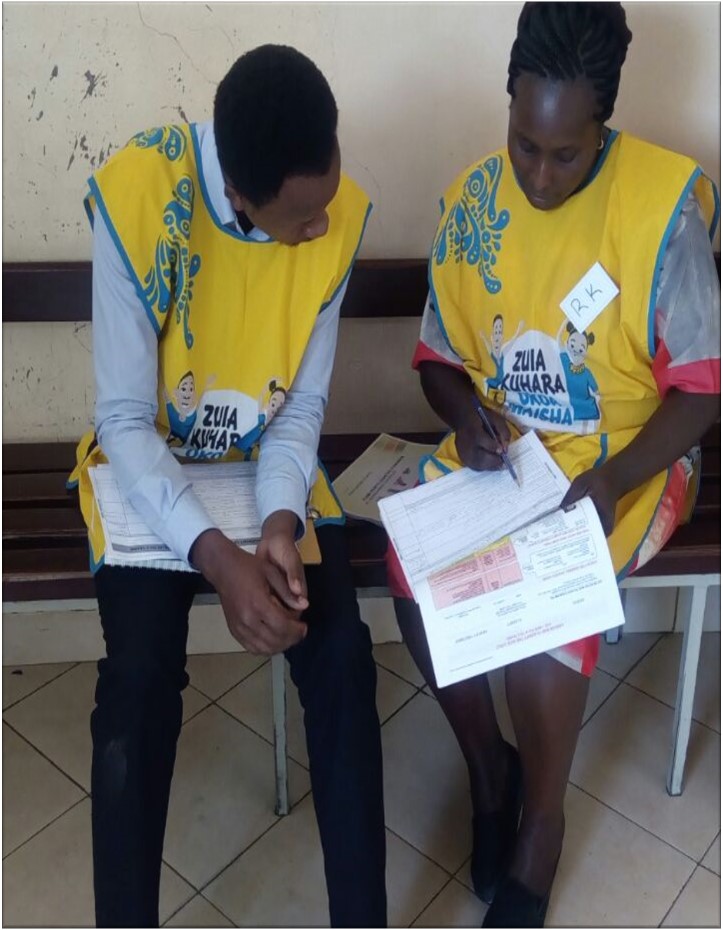Pneumonia is a common respiratory illness in children from North America to Africa. Yet, on this World Pneumonia Day, we also recognize that it remains the single biggest killer of children under five in the world, causing more deaths each year than AIDS, malaria, and the measles combined. About 40 percent of these deaths occur in only five countries: India, Ethiopia, Nigeria, Uganda, and Kenya. We know how to prevent, diagnose, and treat pneumonia, but too many children continue to fall through the cracks. The most vulnerable live in poor, rural communities, where it can be difficult to access the treatment they need to survive.
That is why CHAI has partnered with governments in these five countries to make sure that every child who seeks treatment for respiratory illness is quickly and accurately diagnosed and treated. In Kenya, where pneumonia kills about 13,000 children annually, CHAI, with support from the IKEA Foundation, is working with the government to set a bold vision to rapidly reduce pneumonia deaths.
Pneumonia is an infection that causes a patient’s lungs to fill with fluid, making it difficult to breath. In severe cases, this can result in a complication called hypoxemia – extremely low blood oxygen levels – putting the patient at even greater risk of death. Vaccines can prevent a large portion of pneumonia cases. In Kenya, the percentage of children routinely vaccinated against the illness is increasing, reaching 84 percent by 2018.

A health worker counts the respiratory rate of a sick child in Kenya.
Timely diagnosis and appropriate treatment is critical to reduce deaths among the remaining cases. Amoxicillin Dispersible tablets (AMX DT) are the recommended treatment for non-severe pneumonia. A pulse oximeter is required to diagnose those severe cases that have low oxygen levels. The small device fits over a child’s finger to detect hypoxemia by measuring the percentage of oxygen saturation in the blood. Once diagnosed, oxygen therapy is essential. Many of these interventions, though targeted at pneumonia, are also important for treatment of other childhood illnesses, and CHAI is working to make them part of a comprehensive approach to improve the quality of care for children.
In the last year, Kenya has made strides to incorporate these measures into the country’s healthcare system. In 2017, the Ministry of Health adopted Amox DT as a first-line treatment, per the World Health Organization’s (WHO) recommendations. The Ministry began procuring the medicine later that same year. CHAI is now providing time-limited procurement co-financing to accelerate the introduction and uptake of Amox DT across the country.
Oxygen is critical not only for patients with severe pneumonia, but for many patients with other severe illnesses. Having low oxygen levels in the blood increases a patient’s chances of dying by more than five times. Despite this, many Kenyans do not receive oxygen because it is either unavailable, too expensive for health facilities to purchase, or of poor quality (not meeting medical grade standards for purity). CHAI is working with county governments and other partners to improve forecasting, costing, procurement, distribution, and maintenance of oxygen equipment, including innovative financing deals with private sector companies that will dramatically reduce costs while improving access to and quality of the equipment. Before oxygen can be administered, health providers must be able to identify the patients who need it. However, patient’s blood oxygen levels are rarely checked in health facilities in Kenya. To address this gap, the government and CHAI have partnered to make oxygen saturation the “fifth vital sign”. This includes updating national policies, procuring pulse oximeters and training clinicians on their use, and revising patient registers to routinely capture oxygen saturation levels for all sick children who arrive at health facilities.

Individual feedback is provided during an Integrated Management of Childhood Illness (IMNCI) training session in Kenya.
Finally, we are working with the government to reach the most vulnerable children. A review of patient charts in Kenya shows that only five percent of children with severe pneumonia were accurately diagnosed, and only 26 percent who were prescribed oxygen actually received it. To address this, Kenya is improving how its health system manages the sickest patients across the country, with a new Emergency Triage and Treatment (ETAT) training program. The program, which was launched in 2018, aims to improve critical care and promote early intervention for children most likely to die. So far, staff at the largest county hospital in 12 counties have been trained on ETAT – with the remaining 35 county hospitals to begin training in 2019.
Kenya’s ambitious efforts are the result of strong government leadership, active non-governmental organization and private sector engagement, and an unwavering focus on reducing pneumonia deaths among children in the country. While much progress has been made, it is not enough. On World Pneumonia Day, we celebrate the gains, but also recommit ourselves to finishing the job. Every life lost is one too many.





